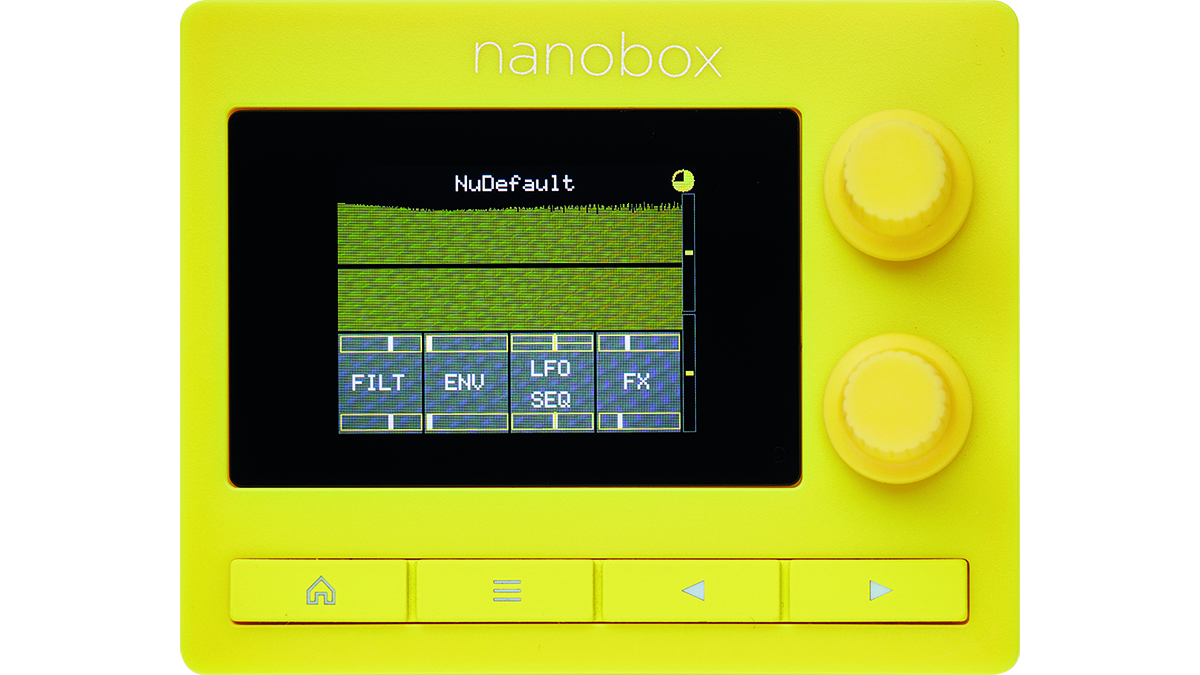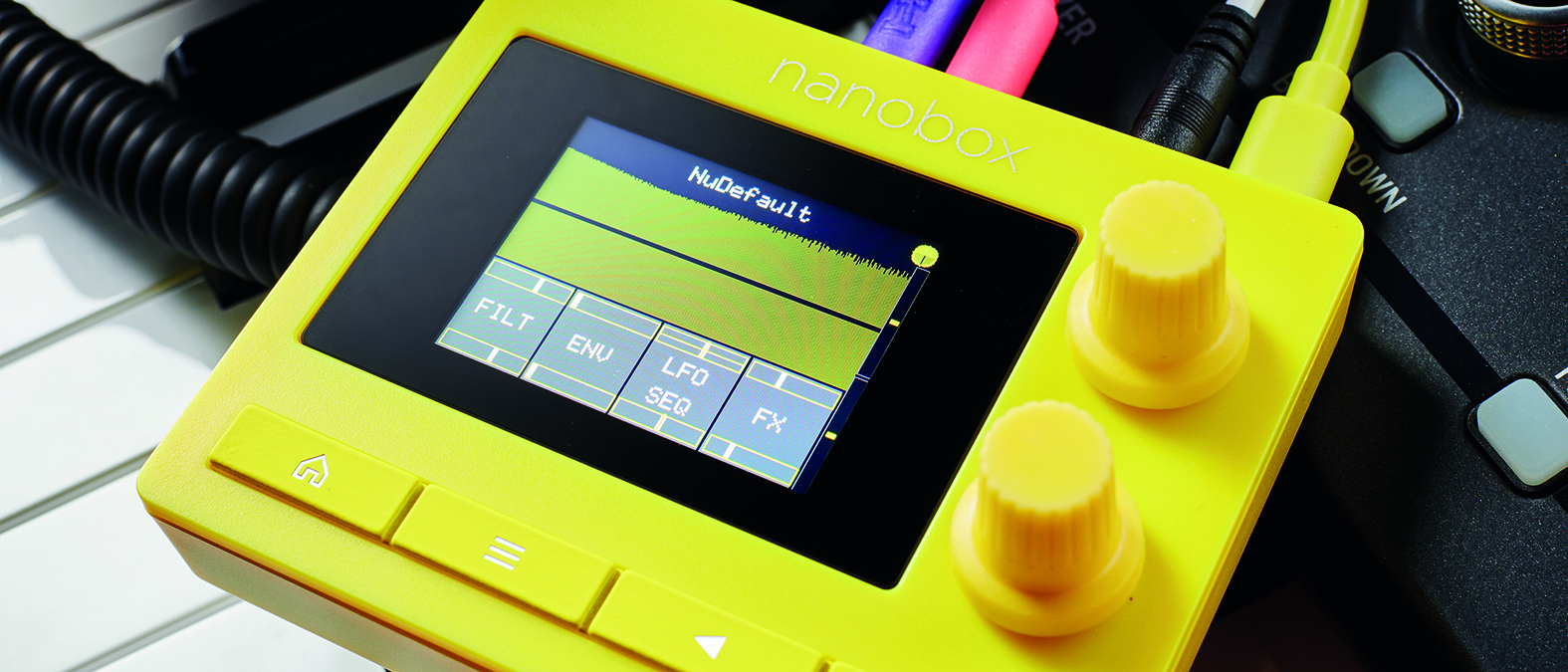MusicRadar Verdict
It lacks a battery but Lemondrop delivers a fantastic granular and dynamic sound not heard of at this price.
Pros
- +
Fantastic evolving sounds with loads of options to edit.
- +
So easy to use given the size – almost a design classic based just on this.
- +
Lovely effects and modulation options make for very dynamic textures.
Cons
- -
Lack of battery holds back its portability.
- -
The touch keyboard isn’t for everybody and you’ll want to connect a proper one.
- -
A tad pricey, but you’ll be hard-pressed to find granular this good for the cash.
MusicRadar's got your back
1010 Music Nanobox Lemondrop: What is it?
We've already reviewed 1010 Music’s Nanobox Fireball, a touchscreen, mini desktop wavetable synth that is one or two tweaks away from genius. Now we have its equally compact sister, Lemondrop. Same concept, different colour and a very different sound.
Lemondrop has an identical workflow to Fireball, so here’s a quick recap. The two-inch touchscreen has four buttons. From the left, a Home button takes you to the unit’s main Dashboard or X-Y performance area, a Layers button opens up a ‘Stack’ of parameters, and the arrow buttons take you to previous screens or modulation options – more on this later. The two dials to the right are for navigating around Stacks and changing parameters (which can also be done via the touchscreen).

1010 Music Nanobox Lemondrop: Performance and verdict
The Dashboard screen is central to everything, with options to select new waves for the two granular oscillators or one of five waves for the third ‘thickening’ oscillator. Along the bottom, you touch zones to access filters, envelopes, modulation and effects. Hit the filter option, for example, and then the Layers button to open up a Stack of parameters or select either filter, then use the dials to change parameters.
As well as the filters, you get two envelopes, two banks of effects and a fabulous modulation section. Here you get a couple of LFOs and a Modulation Sequencer for drawing how your modulation changes. A quite beautiful modulation system shows which parameters can be modulated via three ‘box’ graphics next to each. Head to a parameter with an empty box, hit the right button and you’ll be able to select one of 11 sources and modulation amounts. Hit the left (Back) button and the box is now filled, indicating that the parameter will be modulated by your chosen source. Easy!
Like the wavetable synthesis in Fireball, Lemondrop comes alive with modulation
The X-Y performance controller lets you assign parameters to both axes and perform with them and, similarly, there’s a keyboard option for playing notes – not ideal but it lets you play and hold notes in any scale.
The granular synthesis here is almost the direct opposite of the wavetable synthesis employed in Fireball, breaking the source audio into grains and with a surprisingly large number of parameters to tweak along the way. These include Density, Grain Size and Pan Random to spread grains across the stereo field. There are timing, tuning, jitter and attack options and, like the wavetable synthesis in Fireball, Lemondrop comes alive with modulation.

Then there’s your own audio – run anything through the audio in and use the effects, or load in your own wave files to granulise. And while Fireball has similar extras, Lemondrop definitely has more sonic potential, helped by audio file lengths of up to 30 seconds and all of those granular parameters to tweak. This potential is realised by varied, dynamic presets, with many pad sounds that shimmer and evolve or general out-of-control, granular craziness. Conversely, you can harness wonderful synced and rhythmic effects as well, where everything is locked in with your tempo or defined intervals.
Want all the hottest music and gear news, reviews, deals, features and more, direct to your inbox? Sign up here.
Like Fireball, Lemondrop lacks battery but has an incredible sound. We’d choose it over the Fireball, for those extra dynamics, but both deliver a heck of a sound for their size.
MusicRadar verdict: It lacks a battery but Lemondrop delivers a fantastic granular and dynamic sound not heard of at this price.
1010 Music Nanobox Lemondrop: The web says
"The Lemondrop is creatively inspiring, compact and portable, plus reasonably priced for a synth with a huge amount of potential."
JunoDaily
1010 Music Nanobox Lemondrop: Hands-on demos
1010music
Sweetwater
Reverb
VolcaNiced
1010 Music Nanobox Lemondrop: Specifications
- KEY FEATURES Touchscreen granular synth with 3 oscs, 4-voice polyphony, 2 filters, 2 LFOs, 2 envelopes, Modulation Sequencer, 2 banks of effects, real-time X-Y fader, 153 presets.
- I/O: 3.5mm connections for MIDI in/out, audio in, audio out and clock in, USB C and Micro SD card (included loaded with presets and wavetables).
- CONTACT: 1010 Music
Andy has been writing about music production and technology for 30 years having started out on Music Technology magazine back in 1992. He has edited the magazines Future Music, Keyboard Review, MusicTech and Computer Music, which he helped launch back in 1998. He owns way too many synthesizers.

